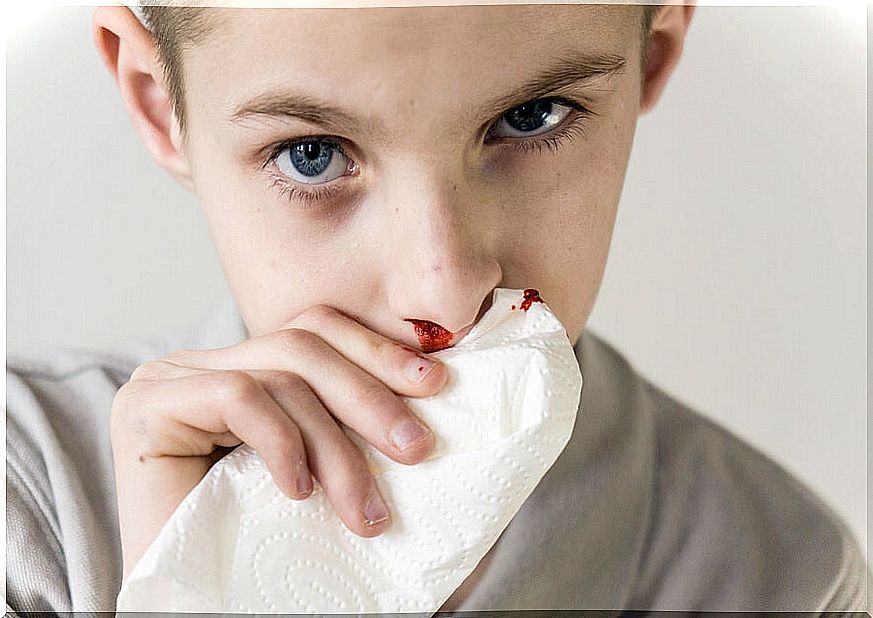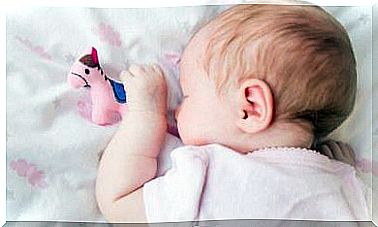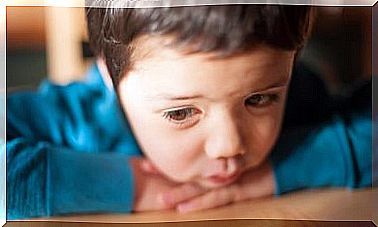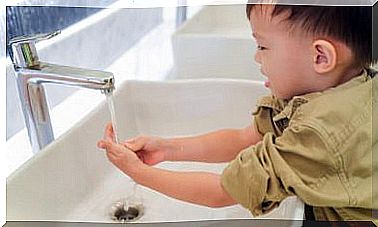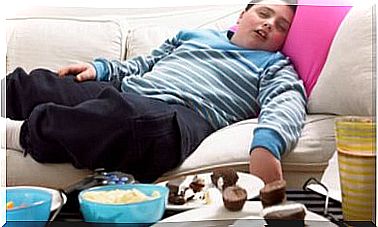Nosebleeds In Children
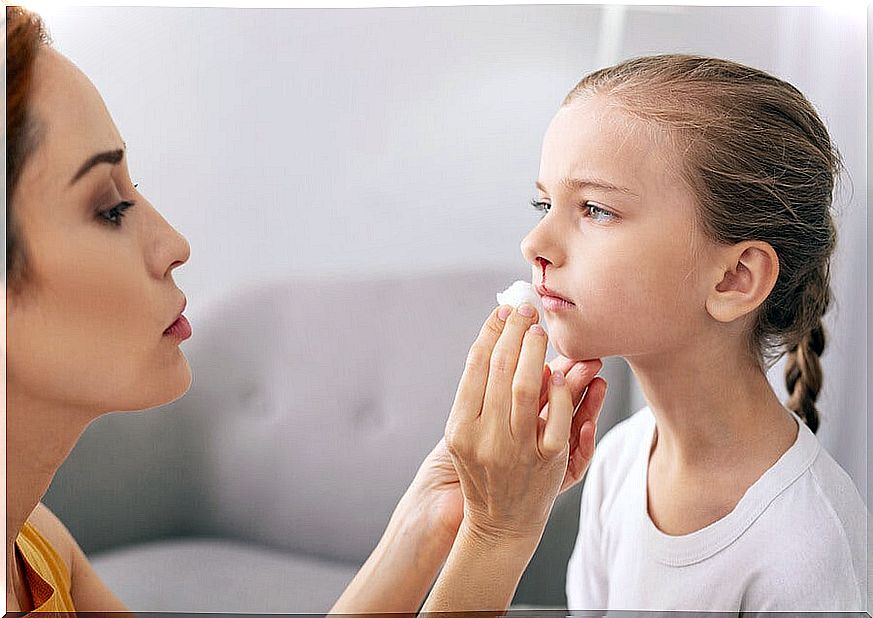
Nosebleeds, also known as ‘epistaxis’, are common in children. They originate mainly in children between the ages of 2 and 10. And while nosebleeds in children can scare parents, this is rarely a serious problem. They generally do not need medical attention and can be treated at home.
Types of nosebleeds
An anterior nosebleed is the most common type of bleed. It occurs in the front of the nose and happens when the small blood vessels in the nose break; It is at that moment that he begins to bleed profusely.
Another type of bleeding is posterior. As the name implies, it occurs deep in the back of the nose. In this case, the blood runs down the back of the throat. The truth is that these cases of bleeding are rare in children.
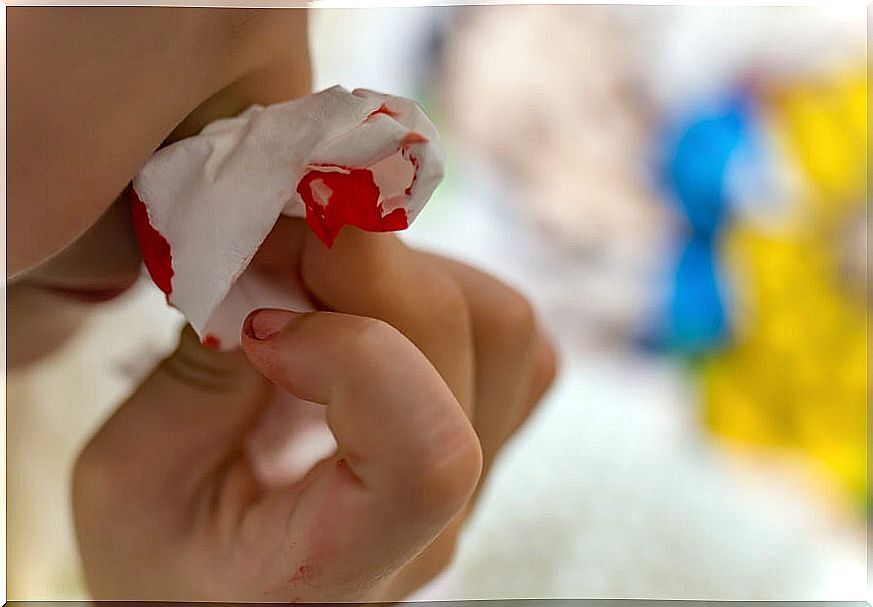
Causes of nosebleeds in children
The causes of nosebleeds in children are diverse. The most common is dry air; both dry weather and high heat can irritate and dry out the nasal mucosa. This causes scabs, which in turn cause itching, leading children to scratch or pick their nose, causing bleeding.
Colds are common causes of nosebleeds in children ; produce irritation in the nasal mucosa, which leads to bleeding. Mostly, this happens when the child repeatedly blows his nose during the day. Allergies also lead to possible nosebleeds.
Finally, trauma, blows or falls are also injuries that can cause nosebleeds in children. As in the previous cases, the blood vessels in the nose are broken by the blow and bleeding occurs.
How to treat nosebleeds?
When children have nosebleeds, adults are often alarmed and concerned. When caring for children, it is very important to maintain and transmit calm ; It will help us a lot to remember that it is not something serious and that the child must be reassured.
To help control bleeding, the nose should be pinched or squeezed with the thumb and index finger. The child should have his head in a normal position or slightly tilted forward; It will be necessary to hold the head in this position for a while for the bleeding to stop.
A very common mistake is throwing the child’s head back. This does not make much sense, since the only thing that occurs with this action is that the child swallows the blood. Even this maneuver can cause you to cough or vomit.
Once the bleeding has stopped, you have to wait a while. In the meantime, if possible it is necessary to avoid that the child touches himself, puts his finger in his nose, or blows himself. During the s following days, it is advised to be careful and not cause further trauma ; among other things, because the area will be weak and prone to new bleeding.
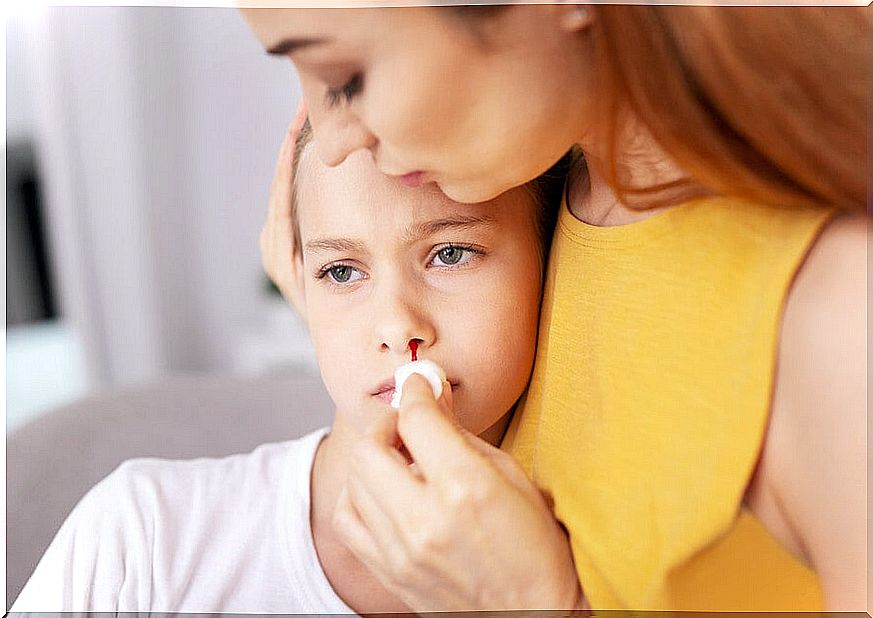
How to prevent nosebleeds in children?
Preventing nosebleeds in children is relatively easy. Most bleeding is caused by environmental factors or trauma. It is important to follow some tips to avoid these bleeds:
- One way to prevent bleeding is to keep your child’s nails short. In this way, you will avoid hurting yourself if you pick your nose. In addition, it is important to teach the child not to put his fingers or objects in his nostrils.
- When the weather is not good, it is good to moisten dry environments. Vaporizers or humidifiers can be used for this; in any case, it is important to keep the equipment clean so that mold or dust does not form on it.
Another way to prevent nosebleeds in children is to keep the nasal mucosa moist. Saline nebulizers or specific creams can be used to achieve this. Either option works to prevent the nose from drying out and causing injury.
Finally, if the child practices contact sports or where he may suffer injuries, it is recommended to use the necessary safety systems so that there is no risk of injury. Remember that even if the necessary precautions are taken, bleeding can occur from time to time.
